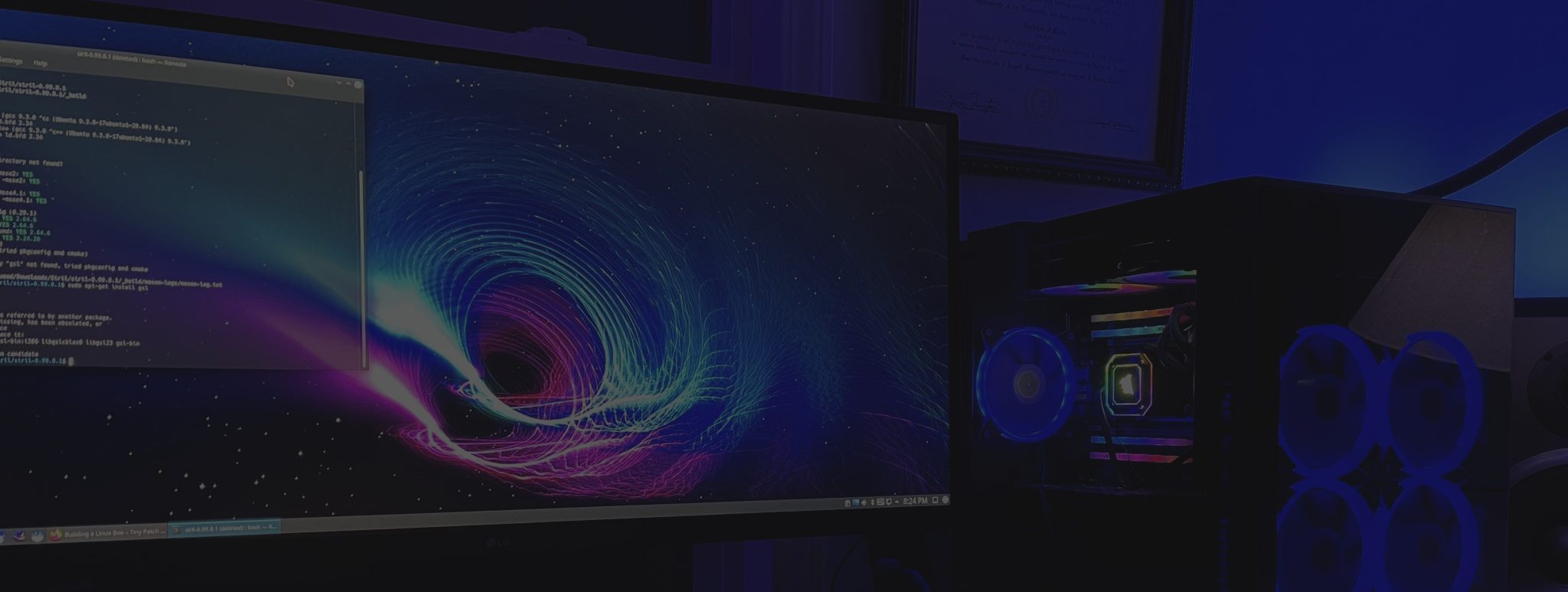I only use Windows when forced to by an employer. It is truly a horrible operating system. I’ve basically been a Mac user since the UNIX-based OS X put the final nail in the coffin of MacOS back at the start of the millennium. Before that, though, I used various flavors of commercial UNIX-based operating systems depending on whatever hardware I was on. IRIX on my SGI Indy, NextStep on a Next cube, etc. But, my primary UNIX experience has been with Linux, the free, open-source Kernel developed by Linus Torvalds. In terms of customization, security, and speed, there’s nothing like it. And, unlike the early days, if there’s a piece of hardware out there, someone has figured out a way to support it.
My current machine is a 16″ MacBook Pro. It’s got a 2.6 GHz Intel Core i7 with 16 gig of RAM, and for most purposes, it is a fantastic piece of hardware. I’ll give it to Apple, nobody marries hardware and software better. But, I quickly found that the laptop was no real match for the kind of multi-threaded processing power it takes to wrestle dozens or hundreds of large image files into submission with PixInsight. Maxing out at 8 threads makes most large tasks a slog on the laptop.
The Hardware
I wanted an upgrade, but I wasn’t about to spend $10k on a Mac Pro. So, I set out to build a Linux box with the Power of a Mac Pro but at a fraction of the price. And, for the processor, the AMD “Threadripper” seemed like the obvious choice, despite its utterly ridiculous name. Weighing price to performance, I opted for the 16-core, 32 thread 2950x. PC Part Picker is your friend here. You can spec and price a complete system, and the site will make sure all the parts you select are compatible with each other.

I picked out a gleaming glass and matte black case, with enough rainbow LED fans to lift it off the ground, then rounded things out with a solid, but not extravagant set of parts. 64 gig of ram, a 2 terabyte SSD drive, mildly decent video card, and a liquid CPU cooler. The case is mid-sized, but cube-shaped (still love a good cube), so there is tons of room for expansion and ample ventilation… which is critical given my plan to overclock the hell out of the CPU.

Building a computer is relatively easy. All it really takes is a Philips screwdriver, the ability to plug cables into things, and the self control not to drink too much beer before you have to drop the CPU into the motherboard. My teenage son, who has built a couple of computers himself, was my build partner. The whole operation took about 2 hours.

I’m a sucker for colored lights and, lucky for me, it is virtually impossible to buy computer parts these days that don’t light up like a Christmas tree. Case fans, CPU heat-sink, radiator fans… everything. My RAM is LED, for chrissakes. More rainbows than Pride month.

In the end though, and despite the gratuitous Pink Floyd laser light show, I thought it turned out as quite a good looking machine. It’s not magnesium, but it’ll do:

The Software
For distribution, I went with the PixInsight team’s recommendation: Kubuntu Linux with the Plasma 5 desktop environment. Kubuntu is KDE’s Ubuntu distribution, and it is one of the more friendly user experiences out there. But, most importantly, the PixInsight folks claim that Kubuntu will eke the best performance out of PixInsight.
There’s also a TON of astronomy software for Linux these days. Check out my description of some of the most popular here.

